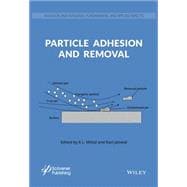The book provides a comprehensive and easily accessible reference source covering all important aspects of particle adhesion and removal. The core objective is to cover both fundamental and applied aspects of particle adhesion and removal with emphasis on recent developments.
Among the topics to be covered include:
1. Fundamentals of surface forces in particle adhesion and removal.
2. Mechanisms of particle adhesion and removal.
3. Experimental methods (e.g. AFM, SFA,SFM,IFM, etc.) to understand particle-particle and particle-substrate interactions.
4. Mechanics of adhesion of micro- and nanoscale particles.
5. Various factors affecting particle adhesion to a variety of substrates.
6. Surface modification techniques to modulate particle adhesion.
7. Various cleaning methods (both wet & dry) for particle removal.
8. Relevance of particle adhesion in a host of technologies ranging from simple to ultra-sophisticated.








